...There once many a man
mood-glad, goldbright, of gleams varnished,
flushed with wine-pride, flashing war-gear,
gazed on wrought gemstones, on gold, on silver,
on wealth, held and hoarded, on light filled amber,
on this bright burgh of broad dominion.
Stood stone houses; wide streams welled
hot from source, and a wall all caught
in its bright bosom, that the baths were
hot at hall's hearth; that was fitting...
Thence hot streams, loosed, ran over hoar stone
unto the ring-tank...
...it is a kingly thing
...city
An excerpt from The Ruin (trans M Alexander, 1966), a fragmentary Old English poem, which was probably composed in the 8th or 9th century AD and is thought to be description of the collapsing ruins of Roman Bath.
Evocative though the poem is, evidence from historical documents and archaeological excavations in the city centre suggests that far from being an abandoned ruin, Anglo-Saxon Bath was an important settlement and focus for early Christian monastic activity.
The Anglo-Saxon Chronicle records that in AD 577, the pagan West Saxons, under the leadership of Ceawlin, defeated the Britons at the Battle of Dyrham and took the towns of Gloucester, Cirencester and Bath. In AD 628, the West Saxons were defeated at the Battle of Cirencester by king Penda of Mercia, and from at least that time, control of the region passed to the kings of Hwicce, a sub-kingdom that owed allegiance to Mercia.
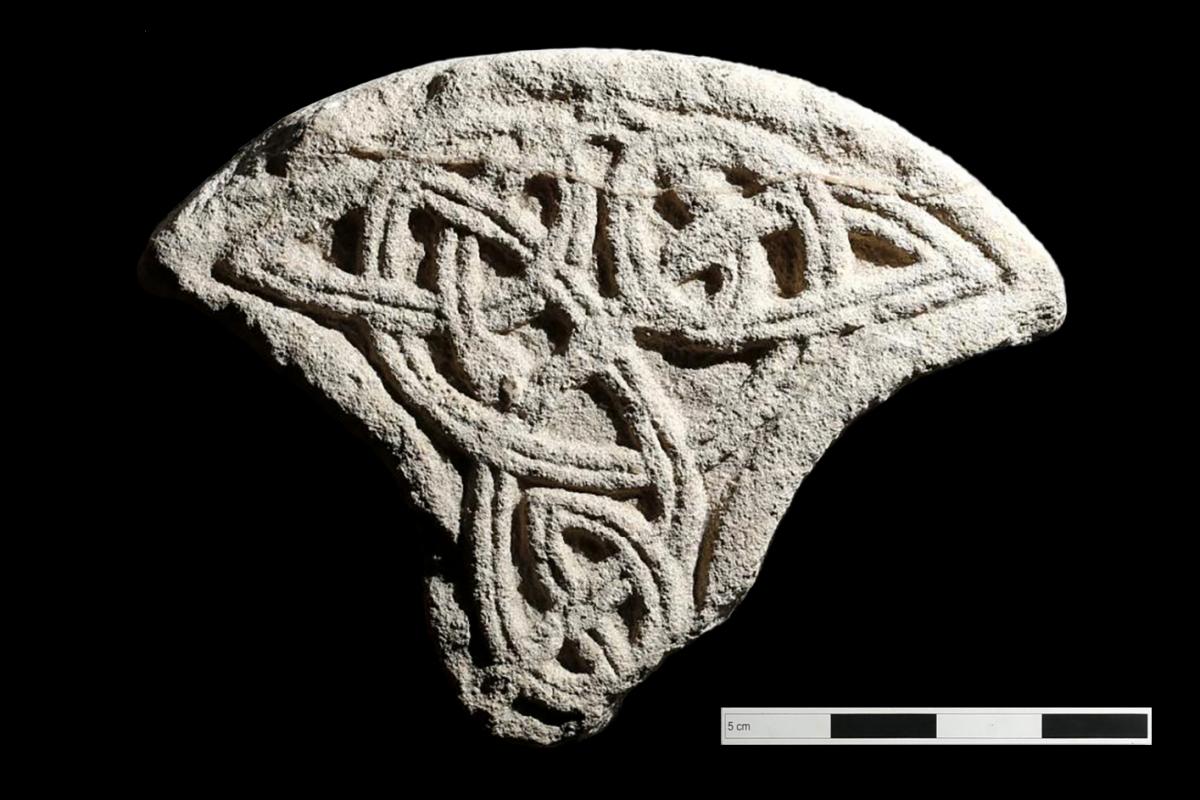
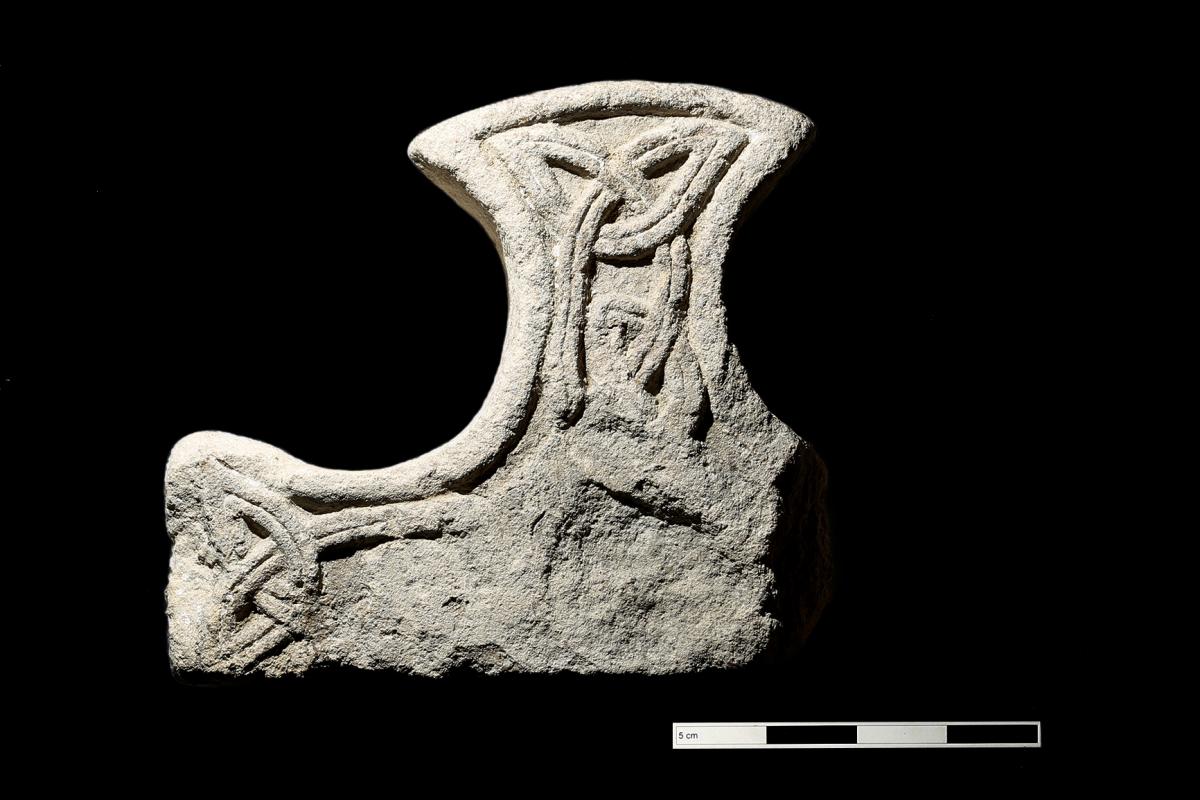
Fragments of two Late Saxon stone crosses from Bath, both discovered in the 19th century. In the collection of the Bath Royal Literary and Scientific Institution
Early developments
The first evidence for a monastery at Bath comes from a 12th-century copy of an earlier charter, which states that on 6 November 675, King Osric of the Hwicce gave 100 hides of land at Hat Bathu (‘the Hot Baths’) to a ‘convent of holy virgins’.
Bede, writing in the early 8th century, meticulously records the conversion of the Anglo-Saxon kingdoms by St Augustin’s mission, but the Hwicce, when they appear in his narrative, are said to have been ‘a Christian people’: it is unclear exactly when they became so, but it is probable that the ruling dynasty was converted by indigenous British Christians within their territory.
It has also been speculated that Osric’s convent may have been re-founding an earlier British religious house. Indeed, there is good evidence for the Christianisation of former Romano-British temple sites from the 4th century onwards, and this may well have been the case with Bath. The convent at Bath was headed by the Abbess Berta, who was almost certainly a Frank. The international flavour of the early English church is further demonstrated by the signatories to the charter who include Leuthere, Bishop of Wessex, also from Frankia, and Theodore, Archbishop of Canterbury, who originally hailed from Anatolia (modern Turkey).
In AD 757, ‘the brethren of the monastery of St Peter in Bath’ were granted a further 30 hides of land, which suggests that by this date the nuns had been replaced by monks. It is possible that prior to this date the monastery had operated as a ‘double house’, with separate communities for men and women. This would not have been an unusual arrangement within an Anglo-Saxon context. Double houses would normally be led by an abbess, but with strict segregation between the sexes facilitated by multiple churches and other buildings within the monastic precinct.
A royal estate
The ‘celebrated monastery’ at Bath is mentioned again in AD 781, following a landgrab by Offa, the powerful king of Mercia. He claimed that 90 of the 100 hides gifted by Osric over a century before, were being unlawfully held by the see of Worcester and were in fact the rightful inheritance of the king. The rulers of Hwicce, by this time reduced in status to ealdormen, were in no position to contest the claim, particularly after Offa secured the backing of Pope Adrian I.
Following the church synod at Brentford, the 90 hides in Bath as well as the 30 hides south of the Avon were ‘restored’ to the king, effectively making Bath a Royal manor. This was not however as disastrous for the monastery as it sounds. William of Malmesbury, writing in the early 12th century, credits Offa with building the church of St Peter, and there is little reason to doubt that serious building work was undertaken, possibly reusing readily available masonry from the collapsed Roman temple and bath complex. Certainly, by the time of Offa’s death in AD 796 the infrastructure was in place for his successor Ecgfrith to hold court at ‘the monastery in Bath’.
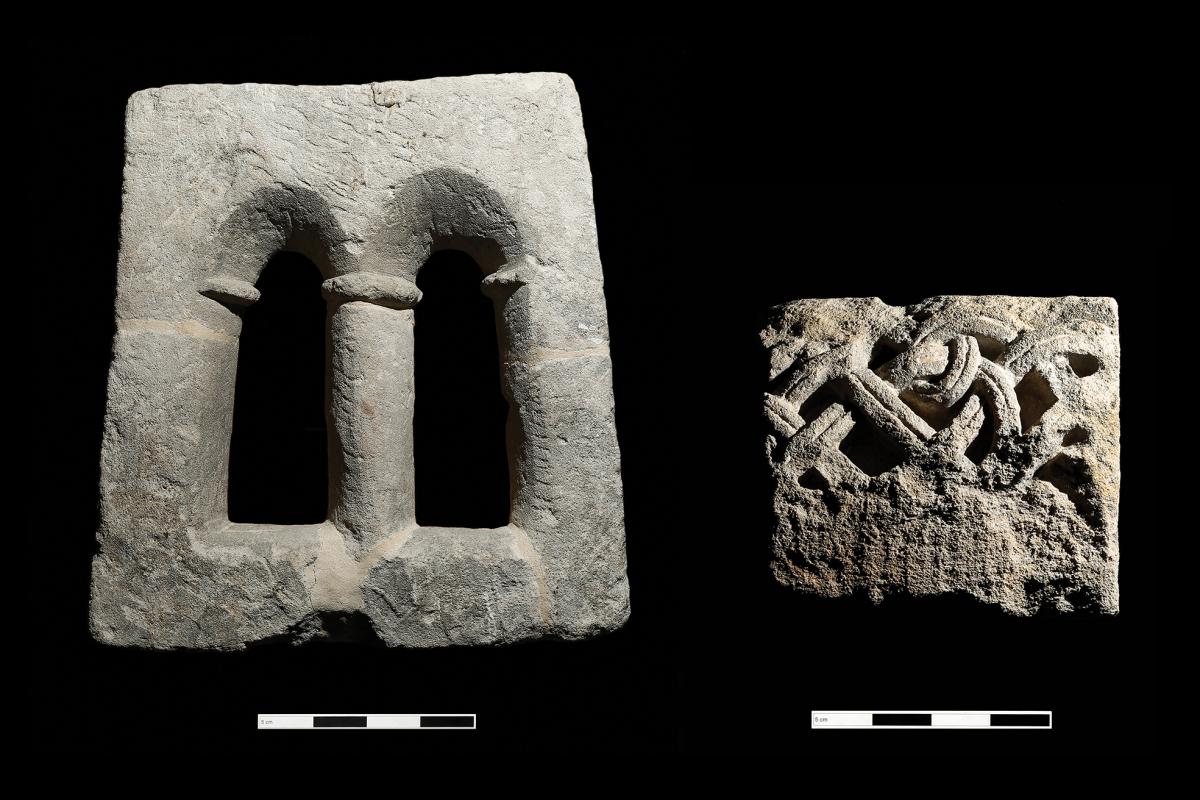
Left: Late Saxon two-light window discovered near Bath Abbey in the 19th century. In the collection of the Bath Royal Literary and Scientific Institution. Right: Late Saxon carved stone discovered North of Bath Abbey in the 19th century. Held by Bath Abbey Archive.
Restoration and reform
The power of Mercia declined during the 9th century, and by the 870s it had effectively become a vasal kingdom to the invading Danes. How the monastery faired during these years of war and occupation is unclear but, following King Alfred’s successful fightback against the Danes in AD 878, Bath was firmly incorporated into the Kingdom of Wessex as a burh, part of a network of fortified towns and forts protecting the kingdom. To improve its defences, Bath’s circuit of Roman walls were repaired and a new defensive ditch was dug. The settlement’s status was further enhanced by the establishment of a Royal mint at the beginning of the 10th century.
The fortunes of the monastery, which had been transferred to the see of Wells in Somerset, also seem to improve under Alfred’s successors. Both Athelstan and Edmund granted lands to the monastery, in the latter case probably the same lands annexed by Offa. The church of St Peter is described in a land charter, of AD 957, as being ‘wonderfully wrought’, so we can infer that the church at least had been well maintained throughout this period.
In AD 957, Dunstan, a former Abbot of Glastonbury, was ordained Archbishop of Canterbury and began to reform the monasteries of England under strict Benedictine rule. He was supported in this endeavour by Oswald, Archbishop of York, and by his patron King Edgar.
The first coronation
Edgar was crowned King of Mercia and Northumbria when he deposed his brother Eadwig, and, following Eadwig’s death in AD 959, also became King of Wessex and the de-facto king of all England. Edgar and Dunstan chose Bath, with its famous church and royal connections to both Wessex and Mercia, as the venue for Edgar’s coronation as King of England in AD 973. Although Æthelstan, Edgar’s grandfather, and Edward, Edgar’s great-grandfather, had both been recognised as kings of all the English within their lifetimes, Edgar was the first crowned King of England.
Every detail of the coronation was carefully choreographed. Dunstan’s ordo took its cue from West Frankish (Carolingian) coronations and explicitly emphasised that Edgar was king by the will of God. A detailed eye-witness account of the coronation is given in the Life of St. Oswald, composed shortly after Oswald’s death in AD 992;
When the Te Deum was ended two bishops raised the king from the ground and, at the direction of Dunstan, he took a threefold oath,
To guard the church of God,
To forbid Violence and Wrong,
And to keep Justice, Judgement and Mercy.
Dunstan then made a prayer and this was followed by a prayer pronounced by Oswald.
After this the king was anointed, the full voiced choir singing the antiphon which tells how Zadok the priest and Nathan the prophet anointed Solomon king in Zion.
The ‘imperial’ coronation of Edgar in Bath probably marked the high point of the Anglo-Saxon monastery’s prestige. This status cannot have been lost on Danish king Swein Forkbeard who, in AD 1013, ‘settled’ his army in the town, where he received submission and hostages from Ealdorman Æthelmær and the western thegns, effectively becoming de facto king of all England excepting London, which capitulated soon afterwards.
Late Saxon archaeological remains at Bath Abbey
Despite the extensive historical record for the ‘celebrated monastery’ at Bath, its physical remains have proved decidedly illusive. This is partially due to the nature of the archaeology – although remains of this period are deeply buried, they are often more ephemeral than Roman and medieval remains, and are more vulnerable to disturbance by later activity.
Saxon and Medieval remains were also largely overlooked by 18th and 19th-century antiquarians in their haste to expose the more dramatic remains of the Roman baths and temple complex. They did however uncover several fragments of carved late Saxon stonework and a lead plaque, which is thought to date from the 10th or 11th century and commemorates ‘Eadgyvu…, a sister of the community, [who died] on September 17th...’.
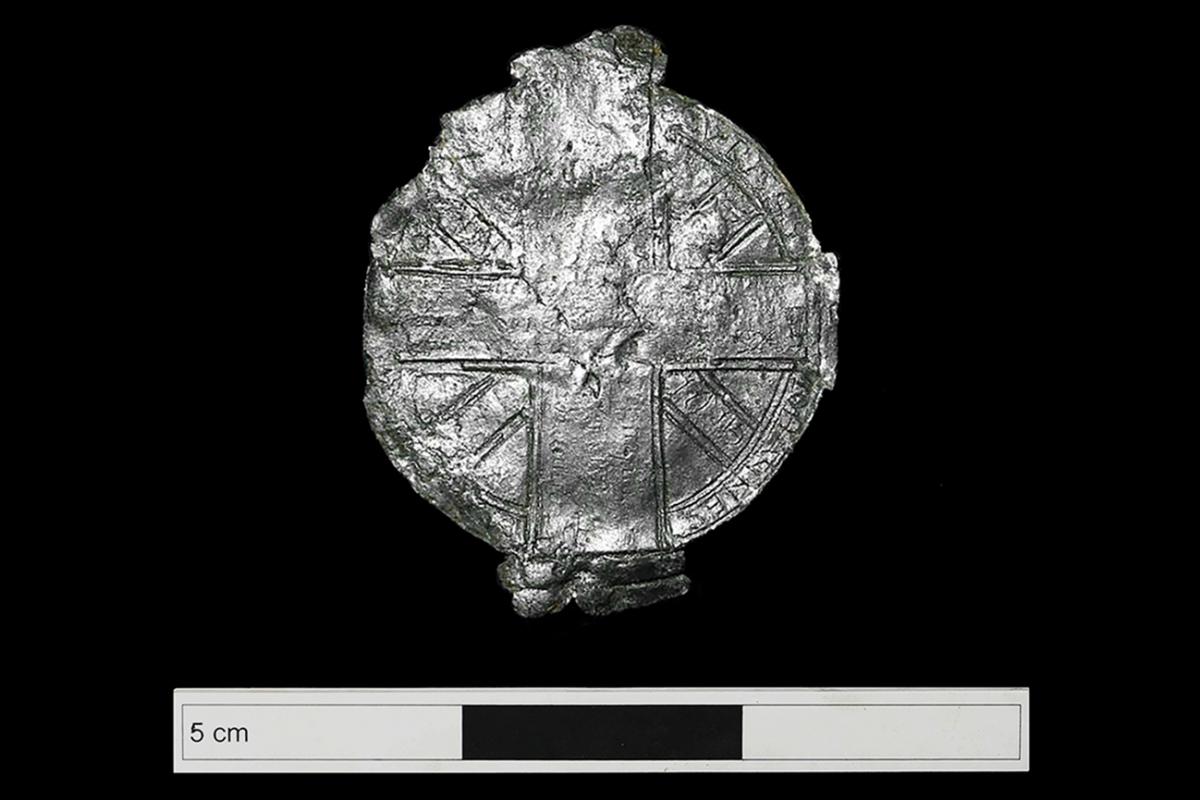
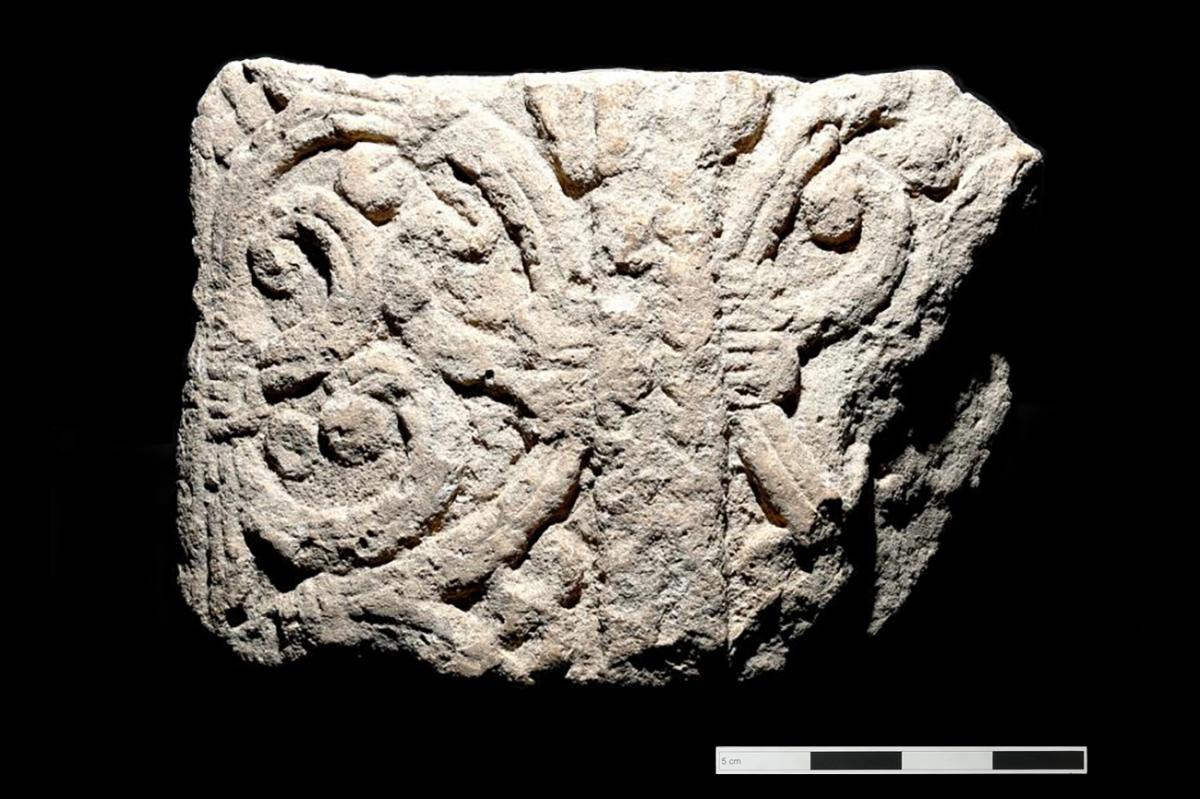
Left: Reflectance Transformation Imaging (RTI) photo of the ‘Eadgyvu’ plaque. Held by the Roman Baths Museum. Right: Late Saxon carved stone reused as medieval grave cover excavated in 1993. Held by Bath Abbey Archive
Excavations by the Bath Archaeological Trust in the 1990s uncovered a further fragment of Saxon stonework (reused as a cover over a medieval grave), and the first direct evidence for the monastic community, in the form of an extensive cemetery to the south of the Abbey. Radiocarbon dating on three of the twenty excavated burials suggest that they date from the 8th or 9th century AD.
Wessex Archaeology’s work within the Abbey Vaults has uncovered further burials of this date, including at least two ‘charcoal burials’. This unusual burial rite entailed laying the body or coffin on or under a layer of charcoal, or in some cases both. The reasoning behind this funerary rite remains obscure, though it has been suggested that it may be associated with ideas of physical and/or spiritual cleanliness and protection.
Our excavations have also uncovered tantalising evidence for well-built stone structures that could potentially date from the Saxon period. These structures are both small semi-circular (apsidal) in shape, have plaster on their internal faces, and could potentially be the eastern ends of buildings.
Apsidal structures are sometimes found in high status Roman structures and Saxon or Norman churches and chapels. The apsidal structures overlie Romano-British deposits and predate two burials that are likely to date from the medieval period. They are also situated in an area that is likely to have been open ground (the Norman cloister garth) from the mid-12th century onwards, which suggests that they are likely to be earlier.
Once we have completed our excavations, it may be possible to use scientific dating methods to determine the age of these structures, which will enable us to explore their relationship with the adjacent cemetery and determine if they are indeed part of the late-Saxon monastery.
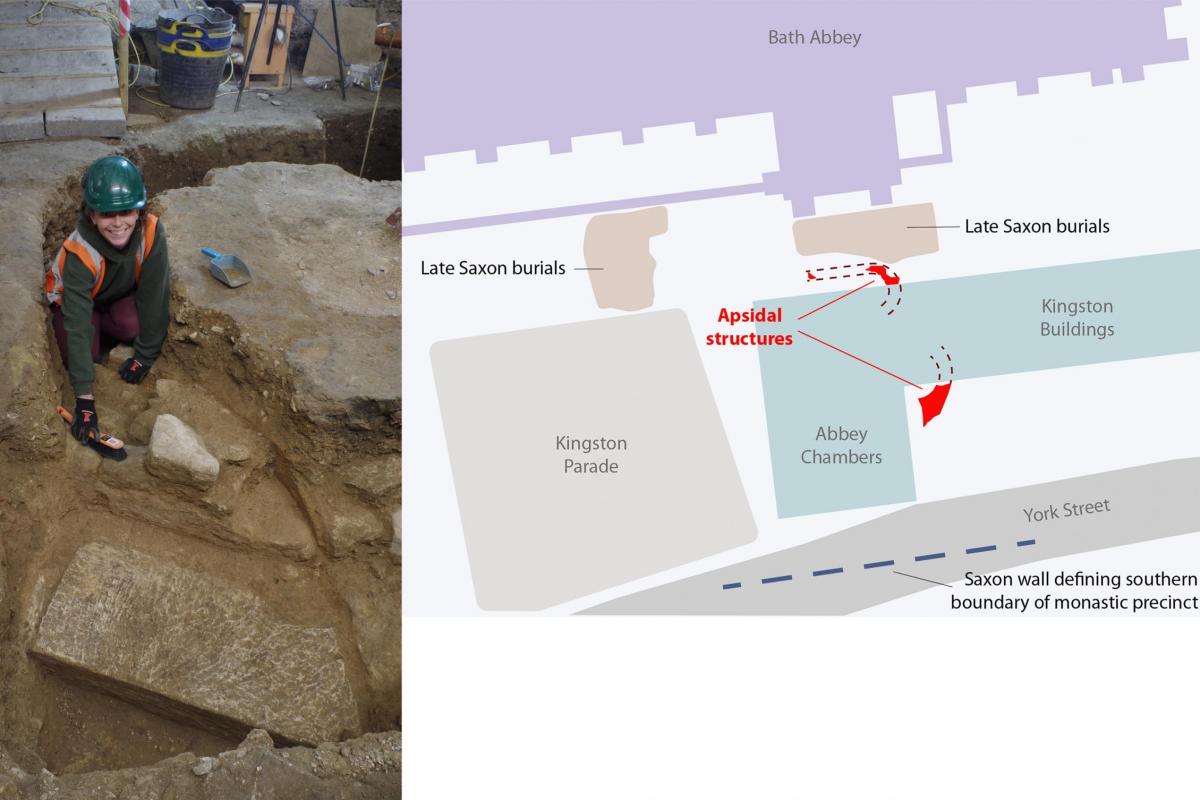
Left: Excavation of the apse beneath Abbey Chambers. Right: Location of apsidal structures
By Bruce Eaton, Project Manager and Cai Mason, Senior Project Officer
